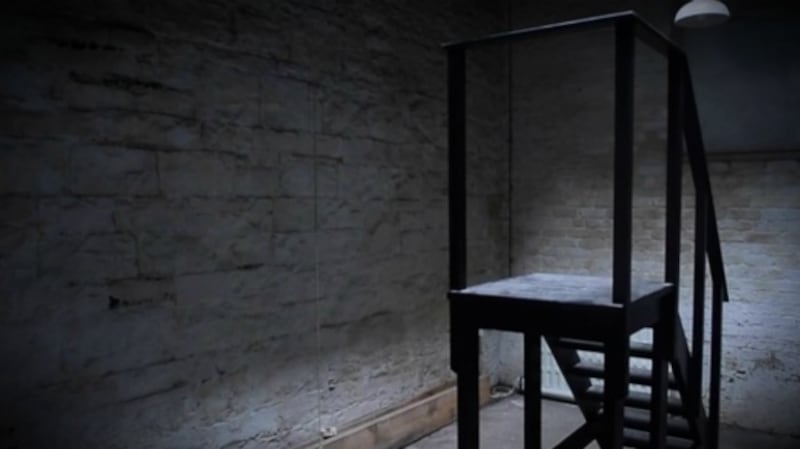John Daly Jr knew there was a man in the house. The man, a neighbour who lived about 300 yards away, was sitting beside the fire with John’s mother. The two were speaking in low tones - it was the afternoon and John Snr was not at home.
John, 11 years old, was put to bed along with his 10-year-old sister at about 9.30pm on the night of June 16th, 1902. They awoke a short time later, disturbed by a violent commotion outside the house.
The children quickly dressed and followed the noise of shouting out into the yard. Joseph Taylor, the man the children had seen earlier, stood above their father, kicking and punching him.

Their mother, Mary, stood by, watching the attack, as John Snr spoke his last words: “Leave me my life.”
Joseph had been drinking heavily that day. When the attack ended, he grabbed the victim’s two arms and dragged his unconscious body some 70 yards up the field and out of sight. The children heard the “jingling” clang of a pitchfork ring out as Joseph brought it down on John Snr.
The next morning, the children were woken at 7am by Mary. Three hours later, young John was sent to report his father's death. Sergeant Conlan, as identified in an Irish Times report from December 13th, 1902, was the first to arrive at the scene in Clonbrock, Co Laois.
“He went to the place and found the body lying on its left side in a field at the rear of Daly’s house,” the report reads. “There were three wounds on the back of the head and several on the left side of the head.”
When police walked the short distance to Taylor’s house and confronted him, he said he knew nothing about the man lying in the field - he was asleep at 10pm the night before.
The police already had experience with Taylor. Five weeks before the murder, following an assault complaint made against him, he told police that Mary had wanted her husband dead and asked him to commit the murder. He refused her request “because he did not wish to be burned in hell”.
‘Murder in the air’
Taylor was arrested and following further investigation, both he and Mary were tried for the murder of John Daly Snr. The proceedings were kept separate.
In the case of Taylor, some of the facts were clear, according to the judge. “The immoral relations between the prisoner and Daly’s wife were certain. There had for some time been murder in the air.”
It was certain, too, that Taylor was in the neighbourhood that afternoon, and had been drinking. But whether or not he committed the murder was solely down to the jury’s belief in the above testimony of John Daly’s 10 and 11 year old children, “both of whom were unusually intelligent”, the judge said.
After about an hour, the jury found Taylor guilty and he was sentenced to death.
“Taylor, on hearing the sentence, appeared somewhat affected. Speaking, however, in a clear voice, he said: ‘Thank you, my lord; I am an innocent man all the same.’”
He was hanged in Kilkenny on January 8th, 1903.
In the case of Mary Daly, she was also charged with murder. The defence argument was clear. The evidence showed that both Taylor and Daly were drinking heavily that day. The murderer, Taylor, would have been in a "dangerous condition" by the time Mary's husband arrived home.
The defence counsel argued that even if the young Dalys’ testimony was true, the death was simply the result of a drunken quarrel, “in which a woman like the prisoner would not have the courage to interfere”.
It took about 55 minutes for the jury to find Mary Daly guilty. Despite a recommendation of mercy along with the verdict, she was also sentenced to death. Unlike Taylor, she kept quiet after the sentence was handed down and “was removed in a dazed condition”.
Mary Daly was hanged in Tullamore gaol on January 9th, 1903. She was the first woman executed in Ireland in the 20th century.
The last woman hanged in Ireland and the second of the 20th century was 31-year-old Annie Walshe from Co Limerick. Like Mary Daly, she was tried for the murder of her husband, Edward "Ned" Walshe. Also charged was Michael Talbot, Ned's nephew.












